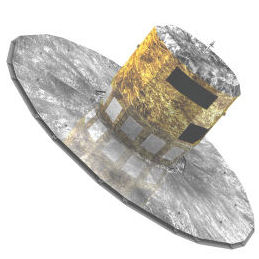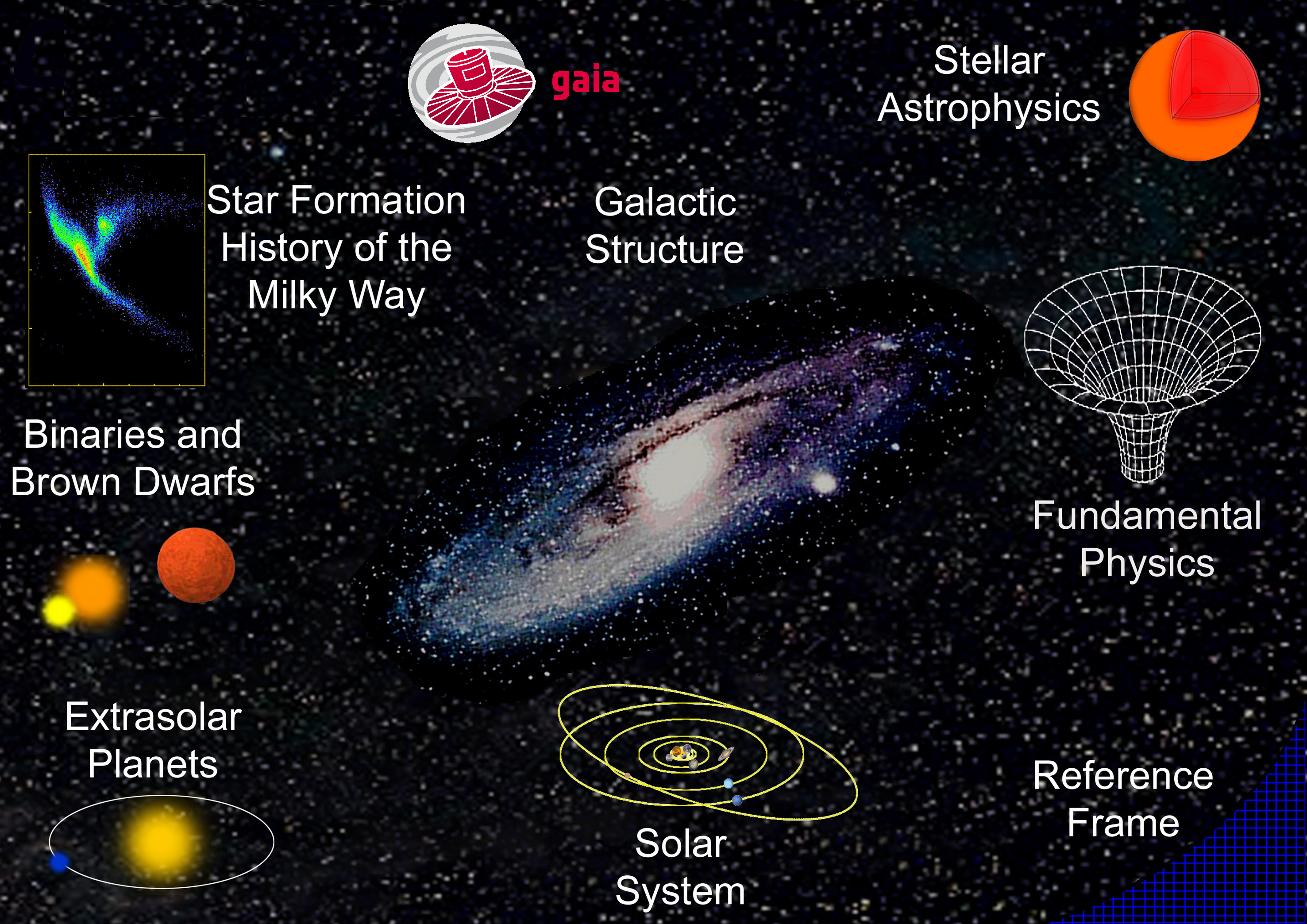Gaia Mission Science - Gaia
Science |
|
|
Gaia's key objective is a detailed study of the Milky Way that will reveal our Galaxy's content, dynamics, current state and formation history. By surveying celestial bodies down to the very faint magnitude 20, Gaia takes in a representative fraction of the Milky Way's population, providing data to tackle unanswered questions about our home galaxy. The all-sky survey of about one billion stars also provides unique insight into many other areas of astronomy. The scientific measurements of the Gaia mission cover three principal areas: astrometry (the measurement of stellar position, parallax, and proper motion), photometry (the measurement of photometric magnitudes in a number of different spectral bands and at each possible measurement epoch) and spectroscopy (for the acquisition of radial velocities and astrophysical parameters). For more information about Gaia's Science, visit the Science Objectives, Science Topics - Information Sheets and Science Performance sections. |
 |
- Removed a total of (1) align=top;
- Removed a total of (1) border attribute.
- Removed a total of (1) cellpadding attribute.
- Removed a total of (1) cellspacing attribute.
Key Facts |
|
| Science Objectives: | |
|
|
| Science Topics and Goals: | |
|
The Galaxy:
|
Star formation and evolution:
|
|
Local Group and beyond:
|
Distance scale and reference frame:
|
|
Extra-solar planetary systems:
|
Solar System:
|
|
Specific objects:
|
Fundamental physics:
|
| Science Performance: | |
|
Catalogue:
|
Sky density:
|
|
Accuracies:
|
Radial velocity accuracies:
|
|
Tangential velocity accuracies:
|
Distance accuracies:
|
|
Photometry:
|
|
- Removed a total of (1) style text-align:center;
- Removed a total of (2) align=middle;
- Removed a total of (25) align=top;
- Removed a total of (1) border attribute.
- Removed a total of (1) cellpadding attribute.
- Removed a total of (1) cellspacing attribute.








































 Sign in
Sign in
 Science & Technology
Science & Technology
